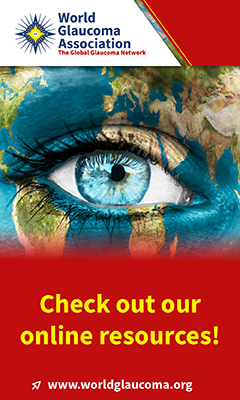advertisement

ANZGIG Auckland 2016 Top-Five
The 2015 Annual Scientific Meeting of the Australia and New Zealand
Glaucoma Interest Group, Auckland, New Zealand, 12–13 February, 2016

Anne M.V. Brooks, Chair, ANZGIG
- A Tale of Two Cities: The City of Physicians and the City of Patients
This presentation reminds us that the worlds in which patients and physicians live are as different as the City of Man and the City of God – the cities dominating the Middle Ages. Physicians think in terms of readily accessible quantifiable data, such as – for glaucoma specialists – intraocular pressure (IOP) and dB of field loss. But patients are persons whose world focuses on how they feel and how they function. “Feeling” is best assessed by careful history. The quantitative surveys, such as NEI-VFQ-25, actually contribute little to the clinical examination. Function is best evaluated by direct assessments, such as reading speed or comprehensive tests such as ADREV or CAARV. Visual acuity and Visual Field are but surrogates, even for function, and are only roughly predictive. Surrogates for disease, such as IOP and age are even more distant and are not indicators that relate well to what is important to patients. In order to enter into the City of Patients, physicians must listen to the patients attentively, knowledgeably and with empathy. (George Spaeth, Philadelphia, USA) - New Associations of an Old Flame: The Role of Inflammation in the Optic Nerve and
Retina
Helen concluded that inflammation is a universal response to injury. Gap junction proteins are integral for cell to cell communication in the response to injury. Connexin 43 both on astrocytes and blood vessels are involved in this response to injury and have been shown to be unregulated both in the retina and optic nerve following retinal ischemia, partial transection, and glaucoma. Blocking of hemichannels with Cx 43 blockers shows neuroprotection in acute injury models. (Helen Danesh-Meyer, Auckland, New Zealand) - Axon initial segment (AIS) plasticity of RGCs following an acute IOP injury
Clinical and pre-clinical studies have demonstrated that RGCs are capable of functional recovery following a prolonged period of dysfunction. In a highly reproducible injury model, RGC function and excitability is impaired at a week following an acute IOP injury in 12-month-old C57BL/6 mice but recovers by one month following injury. No loss of function or excitability is seen in 3-month-old mice. In this study, the authors demonstrate an age-related reversible loss of length of the axon initial segment of RGCs correlated to the reversible loss of RGC function and excitability in this model. This finding may suggest a role for AIS plasticity in the injury and recovery of retinal ganglion cells, and that this process is impacted by age. (Lewis Fry, Melbourne, with Jonathan Crowston and colleagues) - The Visual Function Questionnaire-Utility Index: does it measure glaucoma-related preference-
based status?
As health budgets tighten globally, evaluating the cost-effectiveness of glaucoma services is vital; however, there is a lack of validated instruments that measure utility specific to glaucoma patients. The Visual Function Questionnaire–Utility Index (VFQ-UI) shows potential to measure preference-based status in a cohort of glaucoma patients, with the means to calculate utility. To the best of our knowledge, this is the first time that the VFQ-UI has been evaluated in glaucoma patients, which is of significance as it is a vision-related quality of life questionnaire specifically designed to measure utility. Although the VFQ-UI displayed reasonable fit to the Rasch model overall and had reasonable criterion, convergent and divergent validity, its lack of precision is a limitation. The difficulty of the VFQ-UI in discriminating among patients with varying glaucoma severity may be improved by including items specific to glaucomatous visual dysfunction. (Rachel Goh, Melbourne, with Eva Fenwick and Simon Skalicky) - Reflections On Complex Surgery
Professor Peter Shah discussed pre-, intra- and post-operative strategies to enhance safety
in complex surgery.
He focused on anticipating potentially blinding complications, covering: infection, bleeding, wipe-out, decompression retinopathy, hypotony, malignant glaucoma, tissue shortage and uveal effusion. He presented data from the ReGAE project (Research into Glaucoma And Ethnicity) and highlighted methods for increasing patient involvement in care. Throughout the lecture he emphasised the principle of aggregation of marginal gain as a strategy for managing risk. (Peter Shah, Birmingham, UK)
